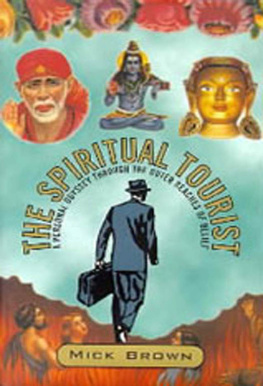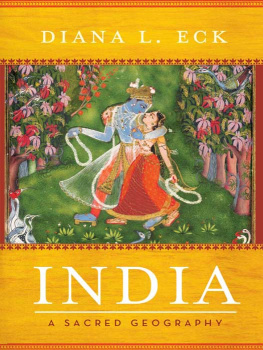Ariel Glucklich - Climbing Chamundi Hill: 1001 Steps with a Storyteller and a Reluctant Pilgrim
Here you can read online Ariel Glucklich - Climbing Chamundi Hill: 1001 Steps with a Storyteller and a Reluctant Pilgrim full text of the book (entire story) in english for free. Download pdf and epub, get meaning, cover and reviews about this ebook. year: 2003, publisher: HarperOne, genre: Art. Description of the work, (preface) as well as reviews are available. Best literature library LitArk.com created for fans of good reading and offers a wide selection of genres:
Romance novel
Science fiction
Adventure
Detective
Science
History
Home and family
Prose
Art
Politics
Computer
Non-fiction
Religion
Business
Children
Humor
Choose a favorite category and find really read worthwhile books. Enjoy immersion in the world of imagination, feel the emotions of the characters or learn something new for yourself, make an fascinating discovery.
- Book:Climbing Chamundi Hill: 1001 Steps with a Storyteller and a Reluctant Pilgrim
- Author:
- Publisher:HarperOne
- Genre:
- Year:2003
- Rating:3 / 5
- Favourites:Add to favourites
- Your mark:
Climbing Chamundi Hill: 1001 Steps with a Storyteller and a Reluctant Pilgrim: summary, description and annotation
We offer to read an annotation, description, summary or preface (depends on what the author of the book "Climbing Chamundi Hill: 1001 Steps with a Storyteller and a Reluctant Pilgrim" wrote himself). If you haven't found the necessary information about the book — write in the comments, we will try to find it.
At the top of the 1,001 steps up Chamundi Hill, deep in India, lies a twelfth-century temple that houses a golden statue of Chamundi, the Hindu goddess worshipped by the Maharajas. A popular tourist and pilgrimage site, Chamundi Hill honors this consort of Shiva who saved the citizens of the city of Mysore from the monstrous rule of their mythical demon-king.
In Climbing Chamundi Hill, Ariel Glucklich takes the reader on a mystical adventure to this enchanted place. A young American tourist goes out for a jog and rests at the base of some ancient stone steps to rub his aching feet. Seeing him take off his running shoes, a retired Indian librarian stops and asks him if he, too, is preparing to make the pilgrimage up Chamundi Hill -- a pilgrimage often made in bare feet. The old Indian offers to tell him some stories to pass the time -- mystical stories of gods and demons, holy men and courtesans, talking animals, and charming thieves. Thus begins an unexpected journey of spiritual enlightenment for narrator and reader alike.
Many of these rich, colorful stories -- originally told in the ancient languages of India -- are translated here into English for the first time. Read about a common weaver who dyes his skin blue and disguises himself as the god Vishnu to win the hand of a princess; and the self-sacrificeof King Karan, who each morning allows himself to be fried in a vat of cooking oil and eatenby a Tantric sorcerer in exchange for a bucket of gold the king distributes to his grateful, but unsuspecting subjects. There are funny stories such as the merchants love-struck son, Udhay, who is swindled by a wily dancer, and of his fathers elaborate scam to recapture his fortune with a monkey that spits out pieces of gold. Delight in the Sanskrit tutors faithful wife, Upakosha -- with coral lips and lotus-blue eyes -- and her clever capture of the four royal ministers who try to blackmail her for sexual favors while her husband is away on a pilgrimage in the Himalayas.
The old Indian librarian relates these wonderful tales and, serving as guru, debates their spiritual meaning with his new American companion. From beginning to end, Climbing Chamundi Hill is an enchanting guidebook to the difficult path of spiritual liberation, and a philosophical window into the meaning of life.
Ariel Glucklich: author's other books
Who wrote Climbing Chamundi Hill: 1001 Steps with a Storyteller and a Reluctant Pilgrim? Find out the surname, the name of the author of the book and a list of all author's works by series.













